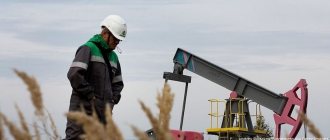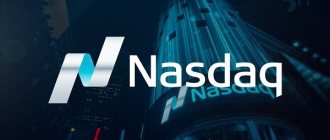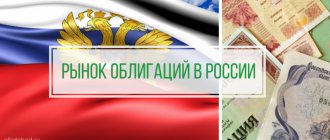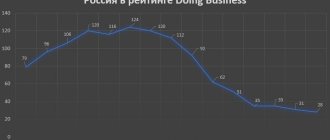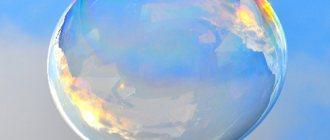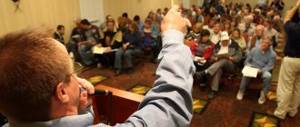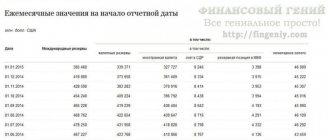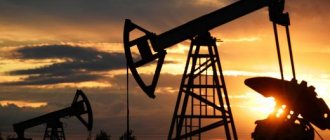Let me make it clear right away that Hong Kong is NOT the capital of China or Japan, and certainly has nothing to do with Thailand. The capital may be the main official city of the country, but Hong Kong is not even a city. It is China's first Special Administrative Region (SAR for short). There is another large island in this area with the same name. We sorted out the main confusion and moved on. What is SAR?
For almost 150 years, Hong Kong was a British colony, and in the late nineties it was transferred to the People's Republic of China. In China, as you know, they profess the ideals of socialism, and in Hong Kong capitalism flourished wildly. An idea called “One country, two systems” helped resolve the situation.
The essence of the idea is that China remains a single state, and Hong Kong, Macau (a former Portuguese colony) and the island of Taiwan become autonomous regions.
They have their own currency, their own laws, regulations, visa regime, politics and economy. In short, these are independent territories that share only geography, borders, foreign policy and defense with China. However, all three special areas belong to China.
S&P 500
The main index of the US stock market, reflecting the entire country's economy. Includes stocks of the 500 largest public companies in the United States by market capitalization. The largest share in the index is occupied by shares of Apple, Microsoft, Amazon, Facebook, Google, Berkshire Hathaway, Johnson & Johnson, Visa and other giants. Stocks are weighted by capitalization: the larger the company, the greater its share in the index.
The S&P 500 is one of the fastest-growing indices in the world, with an average annual gain of 13.45% over 10 years. You can invest in it using ETFs SPY, IVV, VOO, and in Russia - using mutual funds SBSP and AKSP.
Hong Kong city on the map
If you look at a map of China, you will see that Hong Kong is marked with one small dot, along with other cities in the country. However, zooming in on the map, it becomes noticeable that the territory of Hong Kong is not limited to the size of one town and consists of Hong Kong Island, the Kowloon Peninsula and the New Territories.
In addition, Hong Kong includes 262 islands located in the South China Sea, which washes the territory of Hong Kong from the south, north and west. The territory called Hong Kong is an entire entity consisting of 18 districts. The city center is largely located on the Kowloon Peninsula, as well as on the northern shore of the island. This is the most densely populated island of the archipelago. A significant part of the island, however, remains undeveloped due to the mountainous landscape.
NASDAQ-100
Another of the main US indices. Includes 103 stocks of 100 mid- and large-cap US high-tech companies. It is the fastest growing index in the world, as it reflects the capitalization of exclusively growth stocks. 56% of the index is occupied by shares of Apple, Microsoft, Amazon, Facebook, Alphabet (Google), Tesla, NVIDIA, Adobe, Paypal.
The average growth of the Nasdaq-100 index over the past 10 years is 19.83% per year. In 2021, the index grew by 44.64%. After the crisis of March 2020, the Nasdaq showed the greatest recovery dynamics.
You can invest in the index using ETF QQQ, in Russia - using AKNX or FXIT.
Hong Kong in Chinese: another name for Hong Kong
There are many dialects in China. Hieroglyphs are most often written the same, but they can be pronounced completely differently. In the official language of China (Mandarin), Hong Kong is called "Hong Kong". In the local dialect (Yue), the city is called “henkon”, and it is from this word that its name, known throughout the world, was formed. The city owes its modern name to the British, who pronounced “henkon” in their own way, which is why it was transformed into two words “hong” and “kong”. It was this name that was assigned to the island in 1842.
Both Chinese names, Hong Kong and Hong Kong, translate as “fragrant harbour”. The area began to be called such a beautiful epithet because of the numerous traders of seasonings and aromatic incense who chose the coast of the island.
Dow Jones Industrial Average
The oldest index in the world. Displays the capitalization of 30 large-cap companies in the real sector of the US economy - in fact, the “blue chips” of the American stock market. The prefix “industrial” in the Dow Jones index is rather a tribute to tradition, since most companies in the index do not operate in the heavy industry. The largest shares in the index are occupied by UnitedHealth Corp., Home Depot, Saleforce, Amgen, McDonald's, Microsoft, Goldman Sachs, Visa, 3M, etc. companies.
The index shows convincing growth dynamics: over 10 years, the average annual growth was 12.05%. But during a crisis, the Dow Jones declines quite significantly and is the last to recover.
It is easy to invest in Dow Jones through the DIA and DJE ETFs.
Russell 2000
The index tracks the performance of small US companies - approximately 90% of the total number of companies on the American stock market (while their total capitalization is less than 10% of the total market capitalization). This is essentially a snapshot of the US small-cap market.
The Russell 2000 is typically contrasted with “elite” indices like the S&P 500 and Dow Jones. It shows the dynamics of the “deep currents” of the market. The companies in its composition are rarely heard of. Wide diversification (there are more than 2,000 companies in the index, and the share of one does not exceed 0.55%) implies a lower index return, but greater risk tolerance. Thus, over 10 years, the average annual return of the Russell 2000 was 10% with moderate risks.
You can invest in the index using the IWM, SPSM or VTWO funds.
Independent travel to Hong Kong
It is quite possible to go on an independent trip to Hong Kong. Developed infrastructure and well-established communications with various countries make the city attractive to tourists. Next, we will find out whether a visa is needed for Hong Kong, how to get there and what attractions to see.
Visa issue
Hong Kong has autonomy in visa matters. Even though the city is technically part of China, visa rules are somewhat different. Russian citizens do not need a visa to visit Hong Kong for up to two weeks. It is important to take into account that the time of stay is counted by the day, and not by the number of hours.
If the visit is planned for a longer period, a visa is required. Chinese visa holders do not need to obtain an additional visa to Hong Kong. If, in addition to Hong Kong, you will visit other regions of China, you will need to apply for a Chinese visa.
How to get there
Travelers from Russia can fly to Hong Kong by direct flight from Moscow, Novosibirsk and Vladivostok, as well as with a transfer in Beijing, Astana, Dubai or Istanbul.
You can get to Hong Kong by planes of Aeroflot, Emirates, Turkish Airlines and Air China. Sometimes these airlines have sales that will allow you to save big. In general, tickets to Hong Kong cannot be called cheap. For example, a flight from Moscow with Emirates will cost about $530 roundtrip.
Hong Kong Airport is one of the largest and most expensive airports in the world, which has been awarded a special award in this area more than once. There is everything here - from a gym to a 3D cinema and an aviation center.
From the airport to the city you can take a bus, Aeroexpress, or even a ferry if you need to get to the Pearl River Delta. You can also get from the airport to any point in the city by taxi.
Buses depart from the Cheon Tat Rod center at the airport. You can get to the city by buses of routes A and E, except E21A, 21X, 31. The orange color of the bus means its ability to accommodate a large amount of luggage. The fare ranges from 22 to 48 Hong Kong dollars, which is approximately 3-6 US dollars.
Taxis are red, green and blue. Red taxis can take you from the airport to Hong Kong Island, Kowloon, and New Towns such as Quan Wan, Chen Gwan Ou and Sa Thin. Blue taxis operate from the airport to Lantau, while green taxis can take you from the airport to the New Territories. If you suddenly fail to remember the color of the desired taxi, then taxi drivers or controllers will always help you figure it out. As noted above, every second resident here speaks English fluently. The cost of the trip usually ranges from HK$220 to HK$360.
Aeroexpress trains run every 10-12 minutes from 5.54 am to 0.48 am, travel time is 24 minutes. The ticket price for travel from the airport to Hong Kong station is 115 Hong Kong dollars (about 13 US dollars).
The ferry terminal is accessible just before the immigration checkpoint. This type of airport transfer is only available to air passengers.
What to see
There's definitely a lot to see in Hong Kong. Tourists can find attractions to suit every taste. Firstly, the very appearance of this city, built according to Feng Shui, can already be called a landmark, because it resembles a kaleidoscope in which traditional Chinese and modern futuristic infrastructure, urban jungles and green oases of natural parks have been combined into a single picture. Travelers arriving in Hong Kong should definitely visit the following places:
Tsim Sha Tsui Promenade is the center of the city, home to many museums and restaurants. Here you can visit the Space Museum, the Art Museum, the Teaware Museum and a cultural center where various exhibitions are held. Excursion boats depart from Tsim Sha Tsui Pier around Victoria Harbour.
At 552 meters, Victoria Peak is the highest point in Hong Kong and offers views of the entire island. Tourists ascend to the mountain itself by high-speed train along rails with a slope of 40 degrees.
Aberdeen area - here you can have a snack in one of the floating restaurants.
Shengwan Quarter - this place will appeal to lovers of Chinese ancient architecture.
Po Lin Temple on Lantau Island - this temple houses the world's largest statue of a sitting Buddha, which took 12 years to build.
Temple of Ten Thousand Buddhas – in order to visit this temple you will have to climb 400 steps.
Natural attractions cannot be ignored either. In Hong Kong, you should definitely check out the Botanical and Zoological Gardens, the Ocean Park (home to the world's longest escalators), the Bird Garden, and Lama Island, home to large green turtles.
In addition, Hong Kong is considered a paradise for lovers of nightlife and shopping. Fans of shopping can spend days on end doing this activity, as shops are everywhere here. To get started, you can go to Tsim Sha Tsui. The Old Town Central area offers designer items, vintage jewelry and stylish accessories.
Public transport in the city
Hong Kong's transport infrastructure is very developed, and one can even say that it is at the highest level. In the city you can use various types of transport: trams, metro, electric trains, buses, funiculars and ferries. First of all, it is worth noting the Hong Kong metro. This is a real underground city with shops, ATMs and cafes. By metro you can get to anywhere in the city, including to another island.
Separately, it is necessary to mention the so-called moving sidewalks, of which there are a huge number in the city. We are talking about travelators and escalators. By the way, the longest escalator in the world, Central Mid Levels, listed in the Guinness Book of Records, is located in Hong Kong. Its length is 800 meters.
The city has a developed taxi and bus system. Taxis vary in color, so it's important to remember the color you want. You can pay for travel in cash or with transport cards. On buses and trams there is a special ticket office next to the driver where you can purchase a ticket. At the same time, it is necessary to take into account that the machine does not issue change. The fare will vary depending on the travel distance, class, and type of carrier. This is a whole scheme that is quite difficult to remember, so it is clearly presented at every stop and metro station. Ferries also operate between the islands.
It is quite convenient to use transport cards (Octopus card). For tourists, there is a separate type of transport card called On-Loan Octopus. In addition to paying for travel, the card can be used to make purchases in stores, cafes, and gas stations. Discounts are available on a number of products using the card. At the end of use, you can return the card and return the deposit of 50 HKD (Hong Kong dollars).
FTSE 100
The UK's leading index, displaying the capitalization of the country's 100 largest companies (in fact, the “blue chips” of the London Stock Exchange). Shares included in the FTSE 100 include Rio Tinto Group, Barclays, BP, ITV, Vodafone Group, Royal Dutch Shell and other companies. You can invest directly in the index through ISF, VUKE, in Russia there is the FXUK ETF for the broad UK market.
DAX
A German index that tracks the dynamics of the country's 30 largest companies by capitalization. Unlike many other global indices, the DAX takes dividends into account (as if they were reinvested), so is effectively a total return index. The dynamics of the DAX affects not only the European stock market, but also the euro exchange rate. “Under the hood” the index includes companies such as Adidas, Allianz, Bayer, BMW, Commerzbank, Deutsche Bank, Deutsche Börse, Deutsche Lufthansa, Henkel, Siemens, Volkswagen Group and many others. The index is copied by the DAX, EWG and DXGE funds.
Local population
The majority of the population is Chinese (95%), namely Cantonese, although representatives of other Chinese ethnic groups such as Chaozhou, Shanghai and Danxiashan are also present. A significant portion of the population is of South Asian origin.
Many people from India, Pakistan and Nepal have lived here for several generations.
Ordinary Hong Kongers waiting for the green light
In addition, Filipinos, Indonesians, and Thais live here in large numbers. Most of the visitors are employed as domestic servants. On Sundays they have a day off, which they spend in the Central and Admiralteysky districts. Several streets in the Central District are specially blocked for a diverse crowd of thousands.
International Western flair is given to Hong Kong by foreigners from Australia, Europe, Japan and North America.
Hong Kong people are a bit reserved, but very friendly, especially towards children. Learn a few words in Cantonese - this will help you establish a dialogue with the local population.
What immediately caught my eye upon arrival was
the very high population density .
In some areas, they literally have to fight constantly for personal space. Clashes on the streets are inevitable (too many people), but this is not considered bad manners. No one will shout after you “watch your step!”, especially if you briefly apologize.
This is what protests look like
Nikkei 225
Japan's key index includes shares of the 225 largest companies traded on the Tokyo Stock Exchange. Infamous for never rising after its peak on December 29, 1989, and the stock bubble that followed. The Nikkei example is often cited by opponents of passive investing through exchange-traded funds (ETFs).
Investments in Nikkei are made using EWJ, BBJP or DXJ. In Russia, you can invest in the Japanese economy using an analogue - FXJP from FinEx, which tracks the Solactive Japan index (300 companies).
Is Hong Kong the capital of China
Thanks to its developed infrastructure and economy, many consider Hong Kong to be the capital of China, but this opinion is wrong. Hong Kong is not the capital of China or any other country. As noted above, Hong Kong is connected with China by a special status (special administrative region), which will remain until 2047.
Since Hong Kong consists of one city, we can assume that the city of Hong Kong is the capital of the state of the same name. Sometimes you can find information that the capital of Hong Kong is the city of Victoria, but this name has nothing to do with the capital. Previously, during British colonial times, the city bore the name “Victoria”, and then was renamed Hong Kong. The old name now refers only to the Victoria City area, in which the largest number of administrative buildings were concentrated during the times of the colonialists.
IMOEX and RTSI
The two main Russian stock indices - the Moscow Exchange and RTS index - reflect the capitalization of more than 40 of the largest companies in Russia. The largest volume is occupied by shares of Sberbank, Gazprom, Rosneft, Yandex, Novatek, Lukoil, Norilsk Nickel, MTS, Polymetal. The calculation base for both indices is the same.
The main difference is in the payment currency. Thus, the Moscow Exchange index is calculated in rubles, and the RTS index is calculated in dollars. Therefore, the RTS index is affected by the dollar/ruble exchange rate, and if the national currency weakens, it can go down, although the Moscow Exchange index grows.
You can invest in the RTS index using ETFs FXRL and RUSE, and in the Moscow Exchange index using mutual funds SBMX, TMOS, VTBX.
Table of types of postal codes of countries around the world
Postal code (postal code) is a sequence of letters or numbers added to a postal address to facilitate the sorting of postal items.
Currently, most national postal services use postal codes (postal codes). The table shows the types of postal codes for countries around the world. Letter A
in the code means any letter of the Latin alphabet, the number
9
means any number. The spelling of the postal code name in the native language of the country is indicated in brackets.
| A country | Postal code type |
